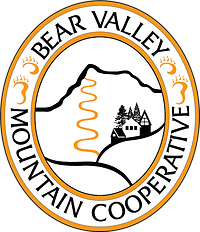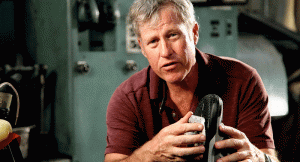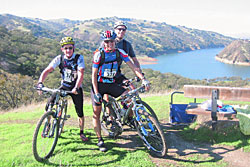- Tahoe’s Nevada Beach Tops the List of Hard-to-Book Campgrounds - 07/17/2024
- Cannabis Watershed Protection Program Cleans Up Illegal Grow Sites - 07/10/2024
- French Fire - 07/05/2024
A three-hour and 20-year tour with the founder of the Pelagic Shark Research Foundation
Story by Bruce Willey • Photos courtesy of Pelagic Shark Research Foundation
The January sky is a cold slab of gray, wet with fog, that settles deep into the bone. Nearly a half-mile off Año Nuevo Island, 25 miles north of Santa Cruz, Sean Van Sommeran, founder and executive director of the Pelagic Shark Research Foundation, kills the motor.
We drift and wait. Fifteen pounds of elephant seal meat wrapped in a mesh bag off the back of the boat sends a faint, greasy streak across the surface of the water.
Año Nuevo has long been a breeding ground for seals, sea lions, and the infamous North American elephant seal, an impressive apex predator in its own right about the size of a grizzly bear. The abundance of pinnipeds makes for a literal smorgasbord of protein-rich blubber for the great white sharks that patrol the waters off the island.
Sharks investigate anomalies in their environment, whether it’s an electrical field, splash, something bleeding. Which partly explains the thin piece of plywood jig-sawed into a cutout of an elephant seal tethered to a rod and reel by a heavy-test fishing line.
“It’s exactly, precisely like fly-fishing, only not even vaguely similar in any sort of way,” says Van Sommeran.
We wait some more, the wait made easier by Sean’s keen banter, a boundless mind atop a short and stout body that looks as if it was hewn from a beam of old-growth redwood. Anthropology, politics, world history, and yes, sharks, make the cold, long wait if not bearable at least entertaining. Skipping from one tangent to the next in a lingering surfer drawl, Van Sommeran seems perfectly at home on the sea, rocking comfortably with the swell. And then …
“Visuals? Incoming. Six o’clock,” Van Sommeran says. The crew in the 22-foot Chris Craft springs into action. “There it is. Coming around the bow. Look alive!”
How could we not? Yes, there it is, the unmistakable sleek form of myths and legends, the beast capable of striking the ultimate fear of being eaten alive, silently glides just under the surface of the water, bigger than what would fit on a movie screen and certainly bigger than a TV nature documentary.
It circles us slowly — all 18 feet of it — making the 21-foot boat seem suddenly puny in comparison. First the nose, then the dark vacuous eyes the size of bagels, followed by its corpulent and scarred middle, the dorsal fin trailing ringlets of water bubbles on the trailing edge. And then its long slender back leading to a tail, effortlessly sweeping lazily back and forth. Rather than fear, I am overcome by its tremendous beauty and can’t take my eyes off it.
Her actually. Most of the great whites here are females, and as she rolls on her side she exposes her sex or rather the absence of claspers (male sex organs for sharks). Van Sommeran entices the shark to the back of the boat by giving the seal meat a sharp tug. She disappears. We wait. But a few minutes later, as if unable to contain her curiosity about us, she reappears, nudging her huge blemished nose past the portside stern. Leaning way over the side of the boat, Sean, with the accuracy of a stone age hunter, thrusts a small yellow tag into the back of the shark near the dorsal fin with a lance. She doesn’t even flinch.
She comes around a few more times before vanishing as easily as she appeared. Only the eerie call of the navigational buoy a mile away and the squawk of a gull interrupt the silence. Everyone in the boat searches the water. The adrenaline fades, but not the high associated with witnessing one of nature’s most revered apex predators in the flesh.
That was more than eight years ago, and the memory of it is one that will never disappear. For Sean, no doubt, it was just another day at the pelagic “office” though his office is a cubicle as big as the Eastern Pacific Ocean. We kept in touch over the intervening years, and I rode the high seas with Sean as he tagged blue sharks in the Monterey Bay; waded into the muck of the Moss Landing’s Elkhorn Slough to tag the prehistoric-looking guitar fish and leopard sharks. Watched PSRF grow and struggle to stay alive against all odds. Sometimes I didn’t think they’d make it. But this year marks the foundation’s 20th anniversary and Van Sommeran and the foundation he helms shows no sign of giving up the fight to save sharks.
“Initially I wanted to continue being a fisherman/mariner,” Sean says, “but as I grew up and realized it’s not what it once was. What was there for my father and grandfather is no longer there. And I’m not good at anything else.”
———————-
The Pelagic Shark Research Foundation began at time when the attitude about sharks, as Van Sommeran puts it, was “save the sharks; save syphilis.” We’re driving through Santa Cruz in Sean’s Mercedes. Shark research isn’t the lucrative, high-roller career it might appear to be, though. The car is 25 years-old and a moldy wetsuit in the backseat gives off a whiff of kelp forest. No, saving sharks doesn’t even pay for the gas.
It wasn’t supposed to be this way. In 1990, Sean founded PSRF under the umbrella of the San Francisco-based Earth Island Institute. At the time there were no regulations in place to protect sharks.
“The first priority and motivation for the foundation was to gather data that was lacking,” Van Sommeran says. “That vacuum of data, pointed at by the fishery officials, was the rational for not taking action. Well give me a minute, and I started collecting the data and doing the work. Population base, movement, migration and with that understanding map out a way to protect if not manage the shark. Back then it was a weird thing. There were vast deserts of ignorance.”
———————-
Van Sommeran has lived a life absolutely transfixed by the natural history of sharks. When he was 10 he would often swim with leopard sharks under the Capitola Wharf. He admits to catching the sharks with a hook and line so he could be closer to his passion. When he was 12, the same year Jaws hit the theaters, Van Sommeran was already working on commercial fishing boats, his father and grandfather’s longtime occupation. Coming out of anchorage early in the morning off Año Nuevo, the boat motored past a large shark biting a seal he remembers witnessing a shark attack on an elephant seal.
“I was stacking anchor chain and stowing anchor,” he recalls, “when I notice birds going nuts and big pool of red water and then recognized the churning masses within to be a big shark shaking and mawing on the seal which was flooding the surrounding seawater with thick red blood that one could easily mistaken for a paint spill.” Sean ran to the wheelhouse and pounded on the door. The skipper was indifferent and continued to smoke a cigarette and drink his coffee. “But I was poisoned for the rest of my life,” Sean says. “I was like wow, shaking, like I’d just seen T-rex. It was the manifestation of all my childhood fantasies.”
Van Sommeran possesses no formal marine biology degree. His knowledge is hard-won; a practical education completed at sea writ large on his weathered face instead of a diploma hanging on the wall. This fact, among others, has put him at odds with many of the personalities and fixtures of the establishment — UC Santa Cruz, Moss Landing Marine Lab, the Monterey Bay Aquarium.
Much like a modern-day Ed “Doc” Ricketts, the self-taught marine biologist immortalized in John Steinbeck’s “Cannery Row” and “The Sea of Cortez,” Van Sommeran says he has often been treated like a Sherpa on Himalayan expeditions. “’Can you step out of the way so we can take a picture of the hero?’” he says, jokingly. “I don’t feel underappreciated. I feel concealed and confined.”
Van Sommeran says his reputation has been dragged through the proverbial mud in an attempt to discredit him and the foundation’s efforts. He was first consulted and then became an outspoken critic of the Monterey Bay Aquarium’s (and other aquariums) efforts to keep sharks and other pelagic species in captivity. Though he doesn’t think it’s impossible to exhibit sharks in aquariums, he is against the practice because of the high mortality and collateral damage in the efforts to gather specimens for the display. “Its like slave ships,” he says. “For every specimen that reaches the ‘arena’ 15 die in the effort to even reach the short term tenure at the aquaria.”
And his once friendly and symbiotic relationship with UCSC has been severely strained. In 2002, an article published in the scientific journal Nature broke open the theory that great white sharks, once thought to inhabit near-shore environments, were actually migrating throughout the oceans. In other words, great whites, the article stated, are pelagic — from the ancient Greek word for “open ocean.” Hailed as a new chapter in shark research, the study tracked six sharks with satellite tags that recorded the water temperature, depth, and position of the animal. One great white, tagged around the Farrallon Islands off San Francisco, managed to end up in the waters of Hawaii.
There was one problem though. The article, authored by marine scientists from Point Reyes Bird Observatory, UCSC, and Stanford Marine Station failed to credit Van Sommeran’s contribution to the study. The Pelagic Shark Research Foundation was forced to sue to get their money back and name on the study. They won, however Nature Journal reneged on the agreement to publish an erratum regarding the misrepresented data.
The irony, of course, can be found on PSRF’s logo, a great white shark emblazoned with the word pelagic. Van Sommeran had long suggested that great whites ranged the open ocean instead of staying near shore. The technology just wasn’t there to prove it.
Coming from a commercial fishing background, he’d identified long line and harpoon fishery related debri (a type of commercial deep sea fishing technique) that often impacts great white shark populations. By way of his anthropology interest, he knew that great white shark teeth had showed up in the Polynesian archeological record. In addition there was an earlier conjecture that white sharks might be following humpback whale migrations and calving rhythms between Hawaii and the Eastern Pacific.
So when microwave telemetry finally became small enough and relatively cheap (about $4000 a piece), Van Sommeran was eager to test the theory out. But he feels that honor, the “gold medal” for his pioneering shark research in Monterey Bay was ripped out of his hands despite prevailing in the lawsuit. “No good deed has gone unpunished since then,” he says.
And over the years he hasn’t made a lot of friends with commercial diving operations. Back in the mid-90s, in the name of “eco-tourism,” were taking divers out to Año Nuevo and dumping large amounts of chum in the water and feeding, even entangling the great whites which Van Sommeran had recently helped gain protected status in California waters. Using the recently established California protected status and the guidelines from the then newly appointed Monterey Bay National Marine Sanctuary, the Pelagic Shark Research Foundation teamed up with the Santa Cruz Chapter of Surfrider Foundation to campaign against chumming and feeding white sharks, arguing that it was not acceptable within a so called marine sanctuary, was not good wildlife care, and that it was interrupting ongoing conservation research. And it could be dangerous to humans as well. After all, Waddell Creek, a mere two miles away as the gull flies is a veritable “rookery” for another kind of marine mammal with toys—surfers, kite surfers, and wind surfers.
“Don’t feed the animals is one of the most basic tenants of wildlife care,” Sean says. “We all know what happens when bears associate humans with food, whether it’s a chipmunk or a killer whale — especially animals that bite things. But I’m not anti-shark cage diving, I’m not anti-shark tourism, just don’t feed the animals. You don’t go whale watching and feed the orcas.”
What’s more, when there’s a media feeding frenzy regarding a shark attack, it’s Sean whom they call, not always some big wig shark researcher at a major university or marine lab. Besides his rapid-fire delivery of shark issues and the fact that he always down plays the panic while putting it all in context, he gives good quotes.
And here, on our drive between Santa Cruz and Watsonville, is where Sean goes off on another enlightened tangent. Abbreviated, three-blocks worth of traveling time snippet:
“You know free-range chicken versus deranged chicken, genetically modified chicken. Would you like that free-range, organically grown hand-strangled or would you like that genetically modified, slowly electrocuted under a blue light chicken? People have no idea. Same thing, ah I’ll have the ahi and no one really thinks of a 1,500-pound fish that looks like a polished aluminum fighter plane. Oh it’s a sandwich, comes in a can that a filthy fisherman caught for us. There’s no appreciation for it. Modern people have no context. Ah, hamburger. Try rodeo clowning one of those cows down then make your self a burger and see how good it tastes then. It comes in cellophane. You can’t get a damn toothpick without it coming wrapped in cellophane these days. That goes down the drain, ends up in the ocean looking like a piece of plankton and some invert (ebrate) eats it, gets gut busted and dies, and chemicals accumulate in the fishes and rises up the food chain. I pick my teeth, I want to eat, I want to do all this stuff, but it’s just a matter of organizing the picnic as opposed to walking up and dumping it down and kicking it across the lawn. So yeah, if I had to sum it up, the purpose is to gain better understanding for the purpose of better management.”
We drive down Highway One, the March wildflowers in the freeway medium in raucous bloom. We’re heading to the Watsonville Airport where Sean will catch a helicopter flight to Big Sur and back as part of a twofold project he’s working on with Specialized Helicopters. The company offers “Sky Safaris” to tourists and Sean acts as tour guide while keeping an eye out for basking sharks and other wildlife of scientific interest.
Basking sharks, Sean tells me, used to be so numerous off the California coast that they were deemed a hazard to navigation. Fighter pilots used to strafe whole groups of them for bombing practice during World War II. Before that the Monterey Yacht Club had a recreational harpoon fishery. For 50 cents one could row out in a dory and harpoon a basking shark. “You’d get the Nantucket sleigh ride,” he says, “until you got bored or the animal expired, whatever came first, and then you’d go back to the harbor in your tennis cloths.”
It’s also come full circle since the basking shark provided the inspiration for Sean to put PSRF in place. Van Sommeran was working as a seasonal aid for the California Department of Fish and Game for tuna, salmon, and rockfish project. The budget caved in and he and 500 other employees were let go. He went back to work at the gas dock at the Santa Cruz Harbor where he’d worked off and on since high school. A commercial fisherman came in and told Sean there were 30-40 foot basking sharks off of Lighthouse Point. Sean jumped in a skiff and went out for a look, tagging as many as a dozen of the sharks in the coming days.
At first people thought they were giant great white sharks, but once they learned they were harmless plankton feeders, that’s when the trouble started. “They were scooting around like big lethargic carp,” Sean says. “And then you had guys who were snagging it with hooks and just cut the line. There were guys on jet skis using the (dorsal) fin as a ramp to do jumps off.”
Sean founded PSRF a few months later.
We pull into the airport outside a helicopter hanger. Best way to locate the now elusive basking shark is with an aircraft. Which is where Specialized Helicopters fits in. Based out of Watsonville, Specialized Helicopters helps Sean locate the basking sharks where Sean wears two hats as researcher and tour guide. Today, Sean will fly out over the coast and down to Big Sur and back with pilot Chris Gularte in a small helicopter a tad bit smaller than a VW Bug. Normally I’d be invited along for the ride, but two more passengers (one for a flight training) have showed up at the last minute, bumping my seat.
As Gularte and his student inspect the helicopter, Sean and I wander the tarmac. I ask him if the last 20 years have been worth all the effort. He ponders this for a few nanoseconds and says: “All I ever wanted to do was marine science and conservation. I’ve developed this reputation of being combative but it’s a matter of translation. The combative, uncooperative part is I insist on doing it (shark conservation and research) when everyone else says don’t do it. I’ve been doing this for 20 years and I sleep on the floor.”
Sean climbs aboard, a long telephoto lens and camera in his lap. The helicopter fires up and the blades spin into a whir before lifting off and heading out to sea.














